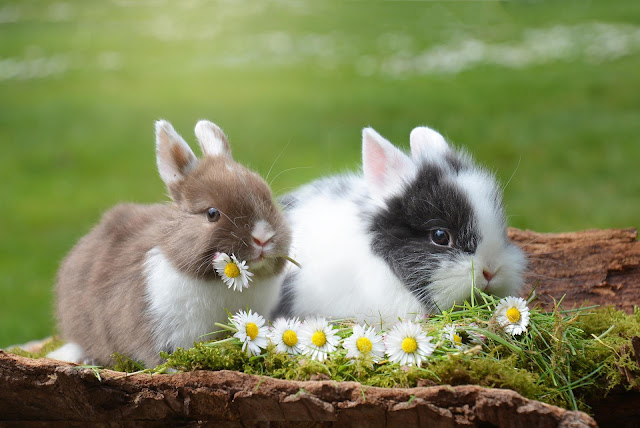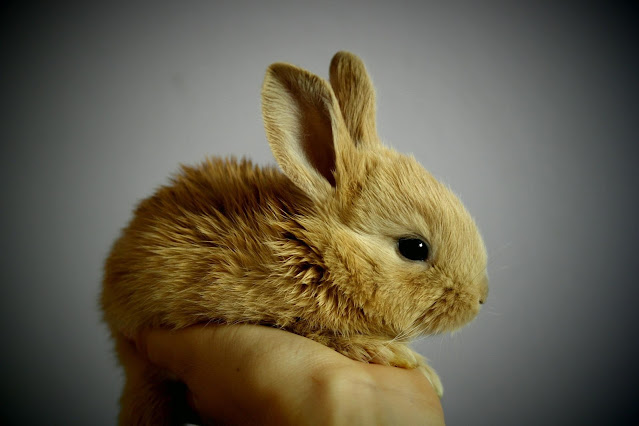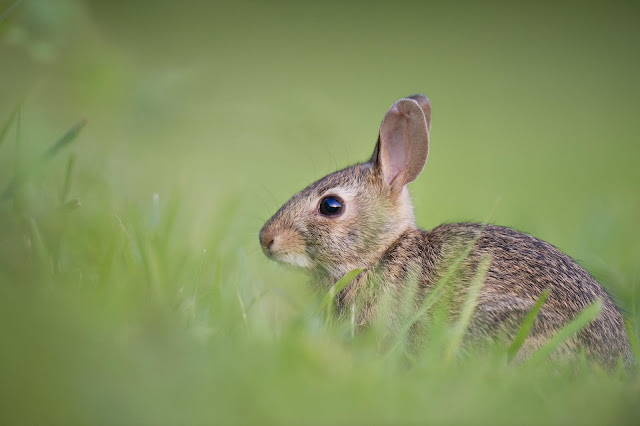Hares typically take well to litter preparing, albeit some adaptability might be expected by the proprietor. Hares normally pick at least one latrine regions, and proprietors can exploit this in litter preparing.
What Kind of Litter Should I Use?
Initial, a reasonable litter is required. Your hare will presumably prefer to lay in the litter box and may try and snack on the litter, so something permeable and safe is vital. Hare pee likewise has areas of strength for a, so something that ingests scent is great. Try not to utilize mud or amassing litters, or cedar or pine wood shavings.
Natural or paper-based pellets and litters are a decent decision (brands incorporate Critter Country, Eco-Straw Pellets, Gentle Touch, Cell-Sorb Plus and Yesterday's News). A few proprietors essentially use hare pellets as litter while others will layer roughage on top of paper-based sheet material in litter boxes to imitate nature. Bunny pellets are conservative and safe however are not a decent decision in the event that your hare consistently eats additional pellets from the litter confine that are doused pee as well as is overweight.
What Kind of Box Should I Use?
For litter dish, feline litter boxes function admirably, albeit more modest container, for example, cake skillet might work for more modest hares. Assuming your hare will in general uphold right to the edge and store fresh, some imagination might be required. A covered feline box is a decent choice or a dishpan that has higher sides can function too (a lower passage can be cut into one side). The bigger size of corner litter boxes could function admirably for more modest hares as well, as these normally have genuinely high backs.
In the event that your bunny will in general tip the dish or throw the litter out, attempt a heavier litter.
The most effective method to Litter Train a Rabbit
Keep Your Rabbit in Its Cage to Begin
To begin, control and oversight is the key. On the off chance that a bunny is permitted to pee and poo any place it loves all along, it will be a lot harder to prepare. From the get go, keep your bunny basically in his (or her enclosure), which ought to be minuscule from the outset, with a litter skillet. Place a litter confine the enclosure, and note where you hare dispenses with. He (she) may begin utilizing the crate or may pick one more corner of the enclosure as a latrine. If so, then, at that point, move the litter box to the area your bunny appears to like. Adaptability on litter box situation might be important both all through the enclosure. Most bunnies will pee/poop in the space where the eat also so remember that for area purposes!
Permit Supervised Time Out of the Cage
When your hare is utilizing the litter dish in the enclosure, permit the bunny out of the enclosure in a restricted region. Place defecation from its enclosure into the litter box to assist your bunny with knowing where to utilize the washroom in view of aroma. Give a litter box inside this area, and maybe make it captivating by setting a treat or most loved toy in the crate. Watch your bunny for signs he is going to pee or poop (they normally back up and lift their tail somewhat), and attempt to quickly crowd him to the container. In the event that your hare is exceptionally quiet about being gotten, it ought to be OK to put him directly in the crate. On the off chance that your bunny utilizes the case, give the hare a treat (food, toy, petting, or recognition) immediately. Assuming you notice your bunny will in general go to one region to do its business, think about putting the container here.
Try not to Punish Your Rabbit for Accidents
Mishaps will occur, and discipline is not welcome in preparing a hare. Your hare can in no way, shape or form make an association with actual discipline and killing external the litter box. Assuming you get your bunny in the demonstration, serenely and tenderly take that person to the litter box right away. Yet, in the event that you don't truly discover your hare peeing or crapping, it is past the point of no return for your bunny to make the association. Simply tidy up and watch your bunny somewhat more intently sometime later (clean the spot weakened vinegar, or a business pet stain/smell remover). The key is to get your hare to the case before he goes, so an outing to the litter box like clockwork during recess can be useful.
Award More Time Outside the Cage
After some time, your hare will likely foster an inclination for utilizing the crate, and how much opportunity you give your bunny can be expanded. You might have to give more boxes as you permit your hare admittance to more space (bunnies may not go far looking for a case so have them helpful). Once more, in the event that your bunny over and over picks one spot in the space to take out, consider putting or moving a litter box there. Attempt to work with what your hare normally needs to do, however if the area they "pick" is badly designed, you can take a stab at putting a litter box there for some time and afterward continuously move it to a superior spot. In some cases, putting a bowl of food where you don't maintain that they should go works as well.
Take cues from the Rabbit
The cycle sounds overwhelming and tedious however normally goes pretty flawlessly as long as the proprietor works with the bunny's regular propensities and gives full focus to the hare during its leisure time first and foremost. Laying out a daily schedule with your bunny will likewise help. Some of the time a formerly prepared bunny will get somewhat reckless, and this generally implies backtracking and confining opportunity until your hare is prepared once more.
More seasoned hares are normally simpler to prepare than youthful rabbits, as they don't have to kill as often and their regular longing for neatness is more evolved. Be that as it may, when hares hit adolescence the craving to check an area turns out to be serious areas of strength for extremely, even beforehand thoroughly prepared bunnies might begin pee stamping and showering as well as pooing to stamp its domain.
Why Rabbits Mark Their Territory
At times regional stamping is what is happening and may happen in light of a pressure, change in everyday practice, change in the family of some kind, or expansion of another pet (especially another bunny). Frequently, when the bunny no longer feels focused on or is certain his region is secure, he (or she) will quit checking.
With everything that expressed, bunnies are inclined to medical conditions with their urinary plot, so on the off chance that there is an unexpected constant change in pee propensities or the variety and measure of pee, an excursion to a veterinarian is all together. This is particularly obvious in the event that your bunny begins expressing while at the same time peeing, peeing blood, or peeing modest quantities habitually (most hares pee rarely and in enormous volumes).
Tips to Reduce Territory Marking
- Have your hare fixed or fixed by 4-6 months old enough. This has numerous medical advantages for your hare, and will likewise make litter preparing more straightforward and decrease pee showering and other stamping ways of behaving. Finishing the medical procedure very early in life works best. When stamping turns into a laid out conduct, littering train the rabbit might be truly challenging.
- Ensure the hare has a real sense of safety in its home. Attempt to abstain from venturing into the enclosure and hauling a hare out as this might cause the bunny to feel undermined and bound to check, and do confine support (cleaning the enclosure and so on) while the hare is out of the enclosure.







.png)

.png)
.png)
.png)











